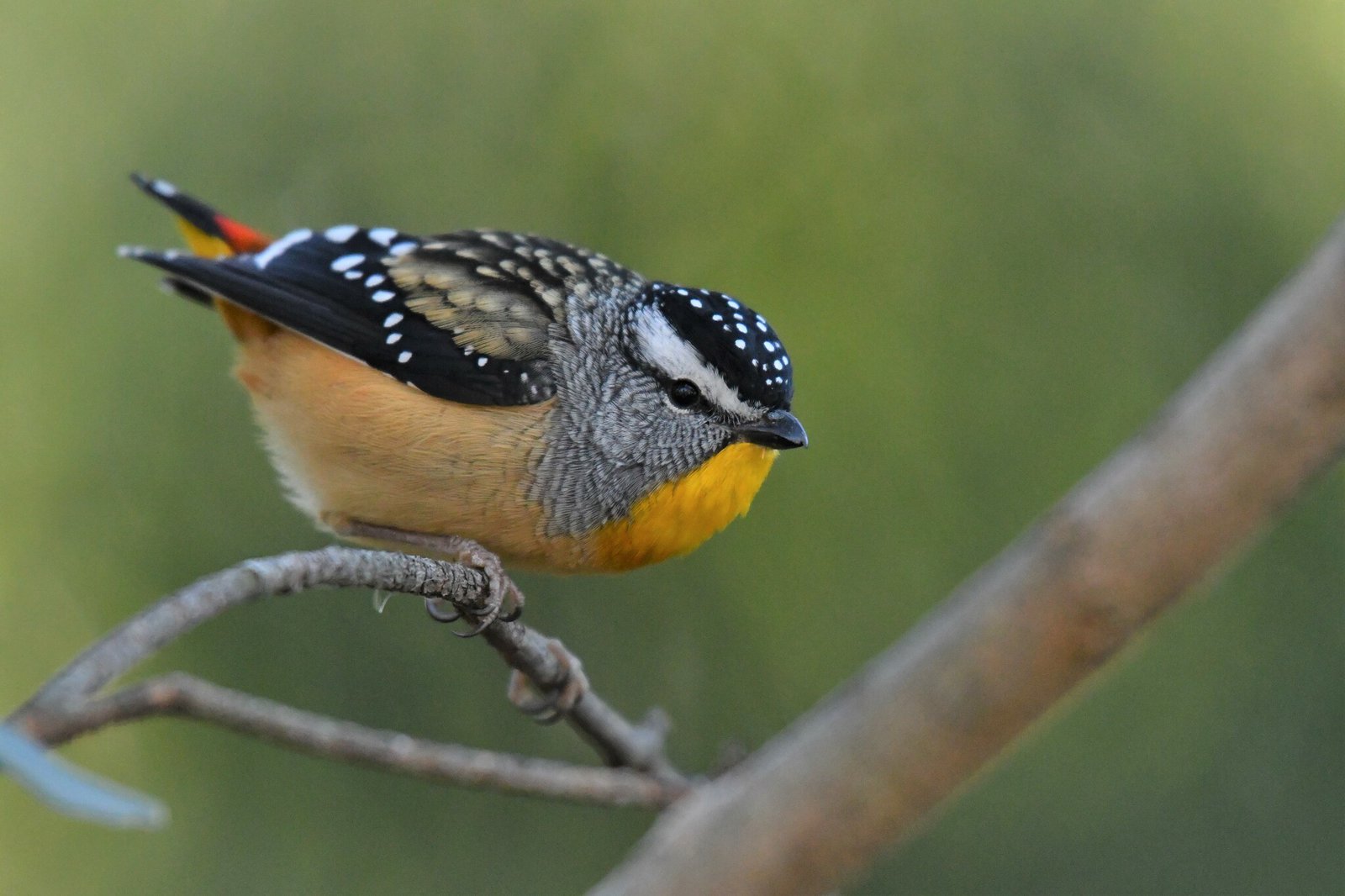Spotted Pardalote
Striated Pardalote
The Spotted Pardalote is sometimes known as the "Headache Bird" because of the continuous "sleep-may-be" call it gives during the breeding season.
What do Spotted Pardalotes look like?
Identification
The Spotted Pardalote is a tiny bird that is most often high in a eucalypt canopy, so it is more often detected by its characteristic call. The wings, tail and head of the male are black and covered with small, distinct white spots. Males have a pale eyebrow, a yellow throat and a red rump. Females are similar but have less-distinct markings.
The related Striated Pardalote, P. striatus, has a striped head rather than spotted, and lacks the spotting on the wings and has a plainer back.

https://creativecommons.org/licenses/by-nc/4.0/
Where do Spotted Pardalotes live?
Habitat
The Spotted Pardalote is mostly found in eucalypt forests and woodlands but occurs in parks and gardens with well-established eucalypt canopy.
Distribution
The Spotted Pardalote is found in eastern and southern Australia from Cooktown in Queensland through to Perth in Western Australia. It occurs in coastal areas, extending to the western slopes of the Great Dividing Range in the east.
Seasonality
Largely sedentary, but may undergo local seasonal movements away from higher elevations in autumn/winter.
What do Spotted Pardalotes eat and how do they communicate?
Feeding and diet
The Spotted Pardalote forages on the foliage of trees for insects, especially psyllids, and sugary exudates from leaves and psyllids.
Communication
Repeated three-note whistle, the second two notes higher than the first.
How do Spotted Pardalotes mate?
Breeding behaviours
The Spotted Pardalote's nest is an enlarged, lined chamber at the end of narrow tunnel, excavated in an earth bank. Sometimes they nest in tree hollows and occasionally in artificial structures. Both parents share nest-building, incubation of the eggs and feeding of the young when they hatch.

https://creativecommons.org/licenses/by-nc/4.0/
Breeding season
June to January
Clutch size
4
Incubation
19 days
Time in nest
21 days
Are Spotted Pardalotes endangered?
Conservation status
The Spotted Pardalote remains relatively common in urban areas that have a high density of eucalypts. Nests have sometimes been found in carpet rolls and garage roll-a-doors.
Urban Requirements: A high density of eucalypts.
References
- Simpson, K and Day, N. 1999. Field guide to the birds of Australia, 6th Edition. Penguin Books, Australia.
- Rowland, P. 1996. A Photographic Guide to Birds of Australia. Australian Museum/New Holland.
- Higgins, P.J. and J.M. Peter (eds) 2002. Handbook of Australian, New Zealand and Antarctic Birds, Volume 6: Pardalotes to Shrike-thrushes. Oxford University Press, Melbourne


